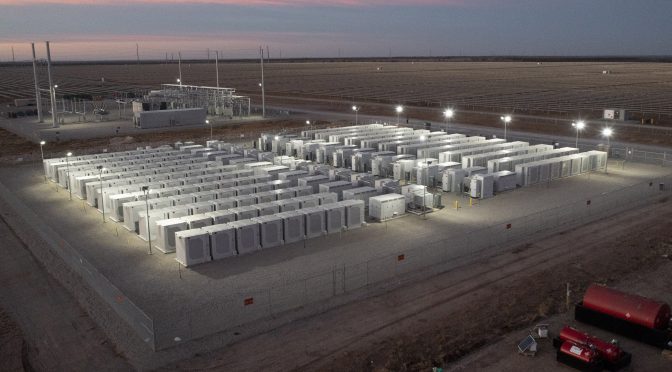For both the United States and the rest of the world, reaching renewable energy targets depends on hybrid power plants featuring battery storage. And Enel Green Power is leading the way in this field, particularly in the Lone Star State of Texas.
Last year the Biden administration announced plans for the energy sector in the United States to be carbon-free by the year 2035. This is ambitious, given that in 2020 20% of the country’s electricity generation came from renewable sources. And yet, according to Enel Green Power’s Head of North America, Paolo Romanacci, the 2035 target is feasible, but on one condition: that we “address the energy storage elephant in the room.” Writing in the publication GreenBiz, he observes that the USA needs “more electricity generation, more resource diversity and more reliability services. Hybrid renewable energy-plus-storage projects provide all three.”
“Hybrid renewable plants are a crucial stepping stone toward an economy powered by 100 percent clean electricity.”
Paolo Romanacci, EGP Head of North America
Grid resilience
The hybrid renewable energy plus storage solution is highly effective in making the power grid more reliable, and therefore less at the mercy of intense weather events. Battery Energy Storage Systems (BESS) use Lithium-Ion batteries and, as Felice Montanari, Head of the BESS, Hydrogen and HV Electrical BOP Competence Center in EGP’s O&M division points out, they are becoming increasingly competitive: their prices have fallen by 90% since 2010, while their energy density has increased by 50% over the same period. For Romanacci, this is only the start. He argues that Lithium-Ion batteries are great for dealing with short-term spikes in demand, as they are capable of delivering full demand from two to eight hours, but “we have the technology for eight- to 10-hour duration, too, just not the market for it. It’s a classic case of technology innovation outpacing regulatory reform. Energy markets are not designed to fully leverage the storage technology that currently exists.”
The Lone Star State
When it comes to hybrid plants, EGP is leading the way in the USA. It plans to add 6.5 GW of new renewables and 1.4 GW of storage capacity in the country by the end of 2024. It is particularly active in Texas, and pride of place goes to the new Lily solar + storage plant in Kaufman, near Dallas. It consists of a 181 MWdc PV facility paired with a 55 MWdc battery. The site has 421,400 photovoltaic panels and will produce 367 GWh of electricity each year when fully operational, avoiding the emission of 242,000 tons of carbon dioxide.
Five other hybrid power plants are also under construction in the Lone Star State. The Star in question may be the Sun, but the projects aren’t only solar: wind farms also feature. The plants are namely: the Azure Sky solar + storage plant (in Haskell County), Azure Sky wind + storage plant (in Throckmorton County), the Roseland solar + storage plant (in Falls County), the Blue Jay storage + solar plant in (Grimes County), and the Ranchlandwind + storage facility (in Callahan and Eastland Counties). At the same time, the High Lonesome wind farm and the Roadrunnersolar park (both are in Upton County, in West Texas) are being integrated with battery storage systems that each have a capacity of 57 MW.
The big picture
Nor do EGP’s energy storage plans stop at lithium batteries. Enel Green Power’s Innovation department is working alongside a Swiss company, Energy Vault, on a simple but revolutionary – and, above all, circular – system that involves taking decommissioned wind turbine blades and turning them into 35-ton blocks of material. Using the same principle as that for hydroelectric plants, these blocks are raised when there is an excess of energy and lowered when extra electricity is required. This is generated by the force of gravity.
“As the world-leading clean energy provider, Enel is already delivering impact at a massive scale, and we are excited to work together in helping to ensure their energy solutions continue to make a positive impact in terms of cost competitiveness, sustainability and job opportunities related to the entire supply chain.”
Marco Terruzzin, Chief Product Officer at Energy Vault
This is in addition to the work that EGP and the Enel Group are doing with Form Energy (a startup that came to life at MIT, the Massachusetts Institute of Technology), to analyze disruptive business models that can be enabled by the multi-day battery storage the startup is developing.
All these projects form part of the big picture, which is best summed up by EGP’s CEO Salvatore Bernabei, who says: “In the near future, we will accelerate our sustainable growth, in line with the Enel Group’s vision, which has set a target for overall renewable capacity, including batteries, of 154 GW by 2030.”


